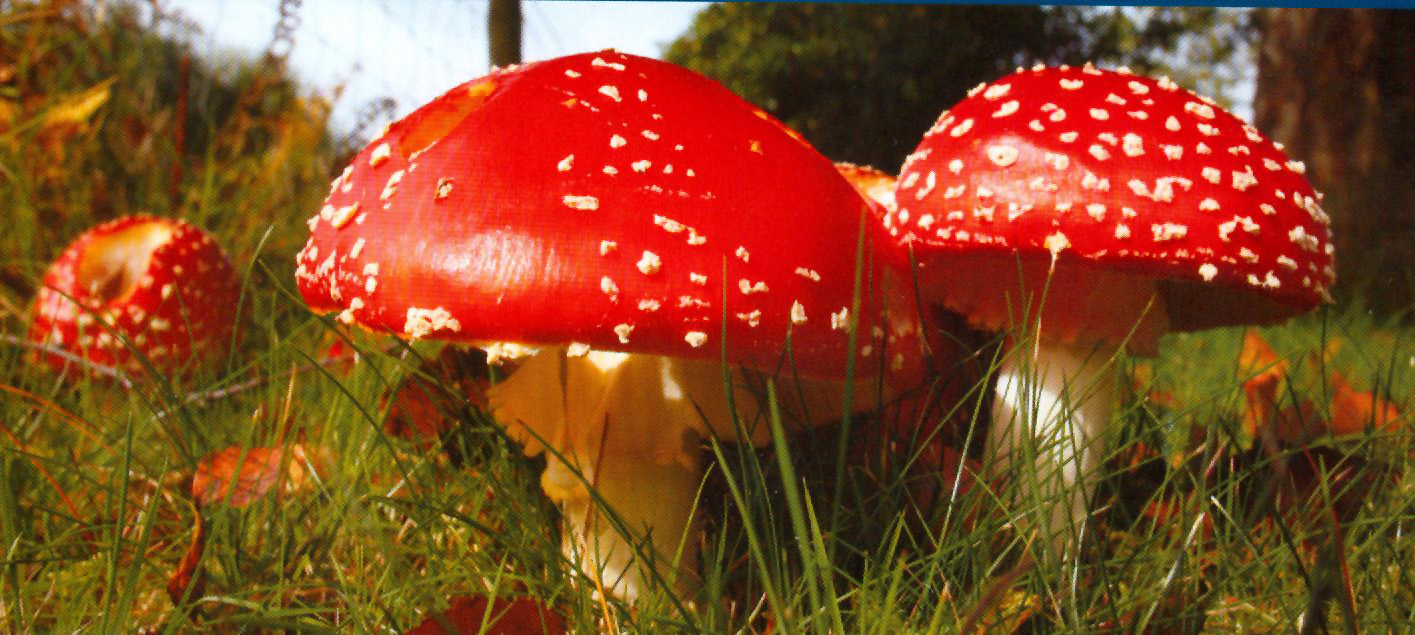Picking lingon berries in the forest (using a picking scoop)

Below is the result of two days' colletion of lingonberries and diverse fungi in the forest some miles north of Oslo.
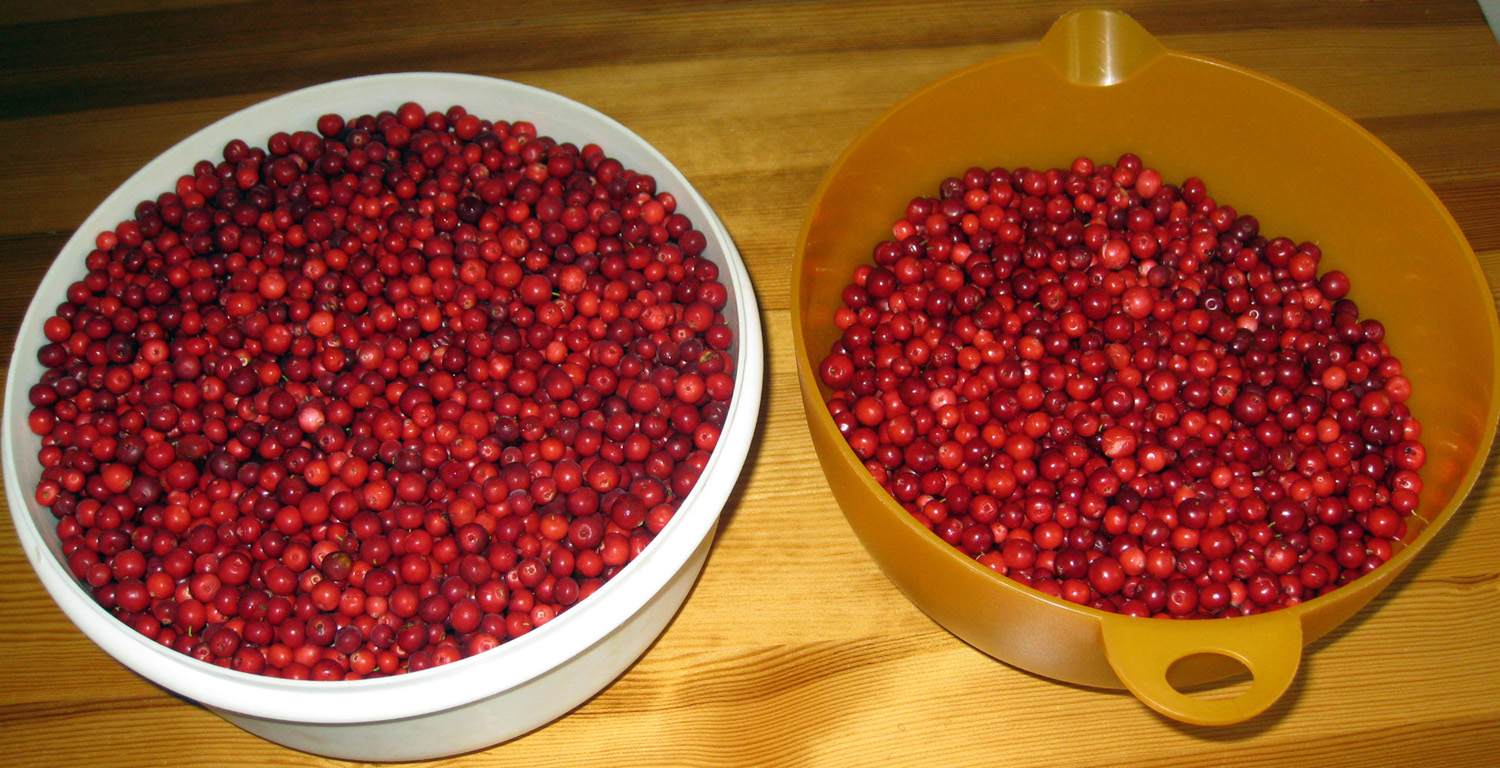
Among the different kinds of edible berries that grow wild in Norwegian woods are the cowberry (or lingonberry - called 'tyttebær' in Norwegian). These are sour-tasting but make wonderful jam (a favourite relish together with reindeer meat, beef etc.) . The best way of preserving the fresh fragrance of these berries is simply to add sugar and stir, then keep in a fridge or freeze down. The photo shows cowberries picked in the woods near Oslo in 2009.
Picking lingon berries in the forest (using a picking scoop)

Below is the result of two days' colletion of lingonberries and diverse fungi in the forest some miles north of Oslo.

The jars contain lingonberry jam, the freezer boxes 'stirred lingonberries with sugar' (rørte tyttebær)
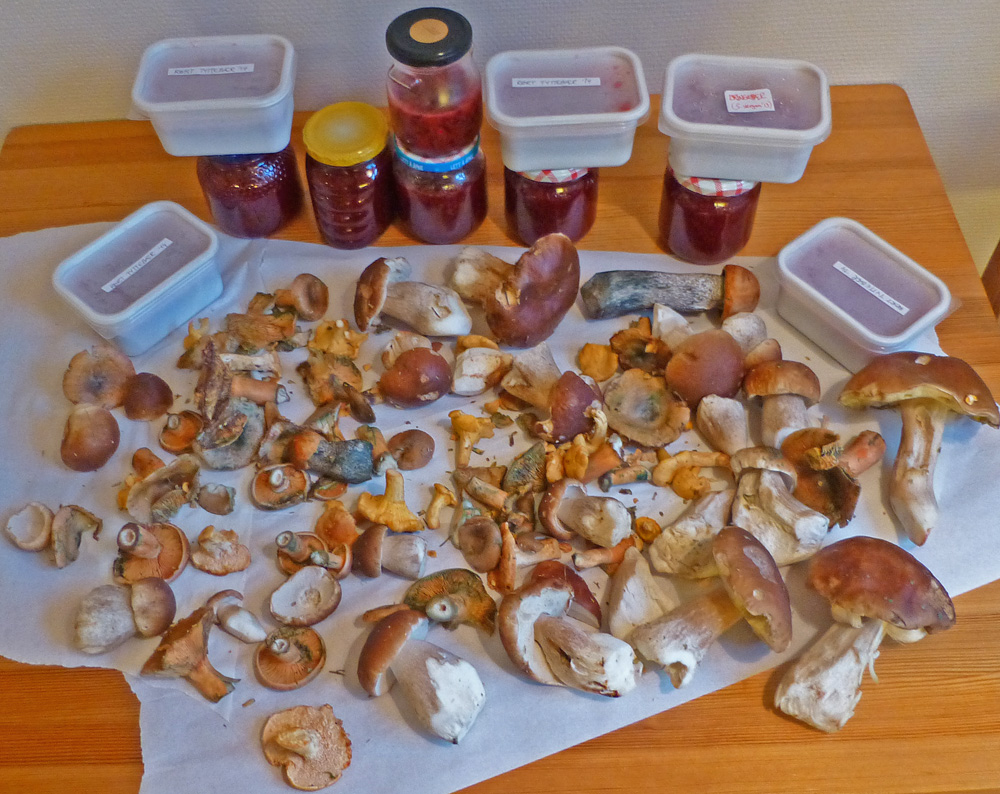
The close-up shows mostly 'porcini' fungi
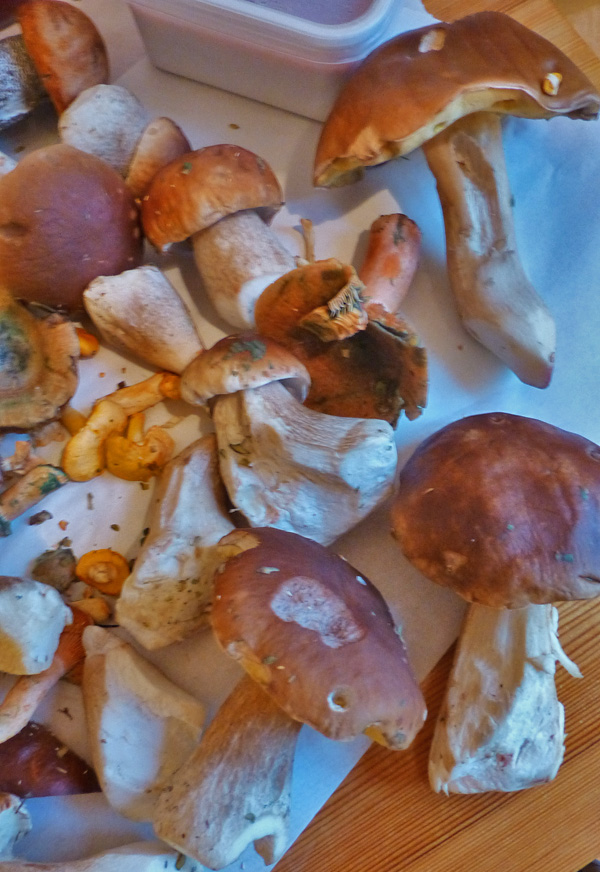
Below is a close-up of saffron milk fungi plus 'piggsopp' (Hydnum repandum) and 'brunskrubb' (birch bolete Leccinum scabrum)
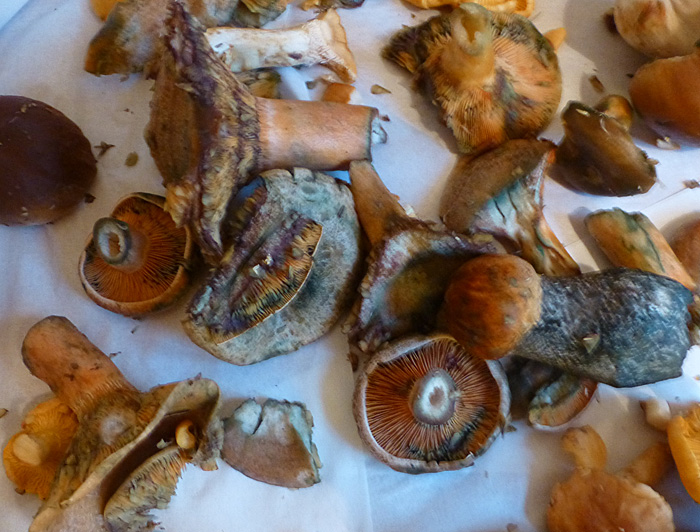
Below are lingon berries, piggsopp (top left) and region cantarelles (traktkantareller)
collected north of Oslo on September 15, 2014 - (with homemade Prince cake i.e. fyrstekake -top right)

Below - piggsopp in close-up. Pigger are spikes (underneath the hats)
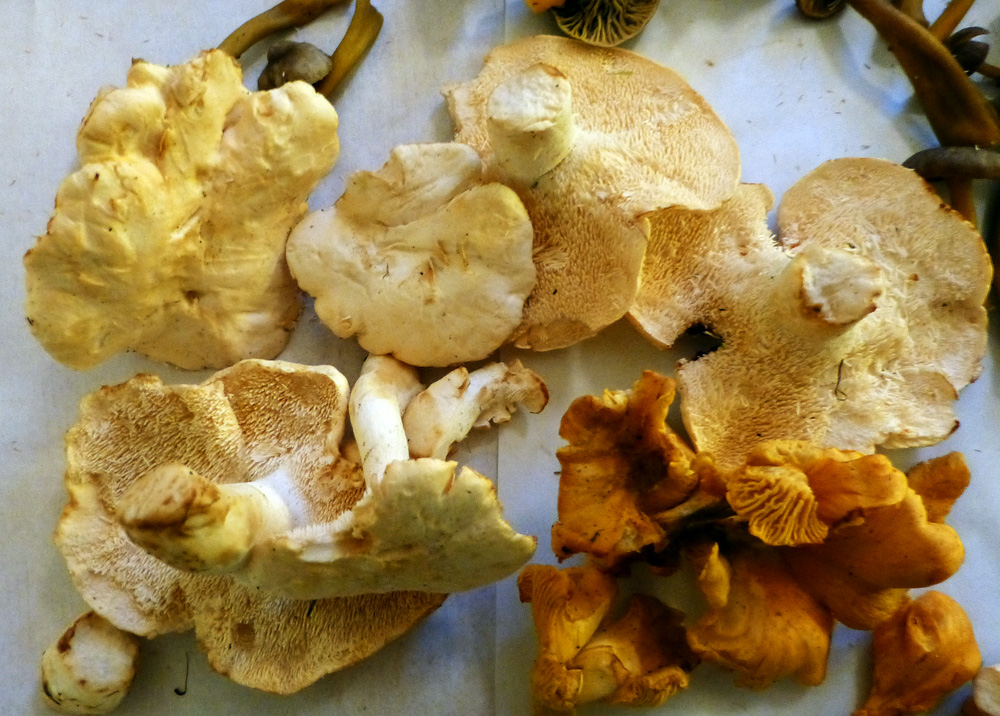
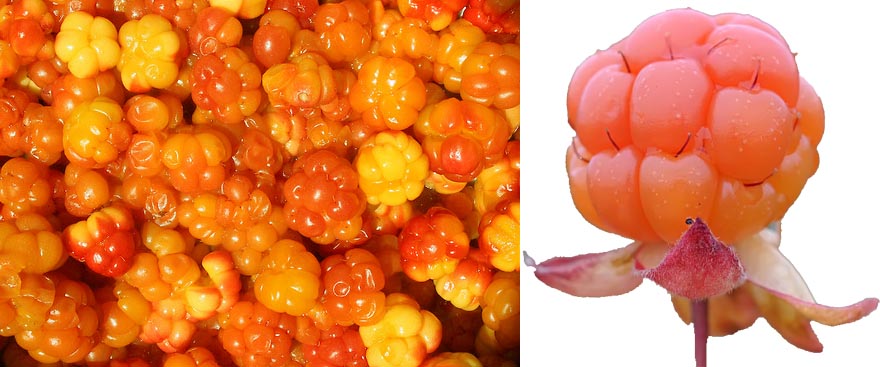
Region cantarelles (traktkantareller)

Another favourite in the Nordmarka woods is bilberries:-
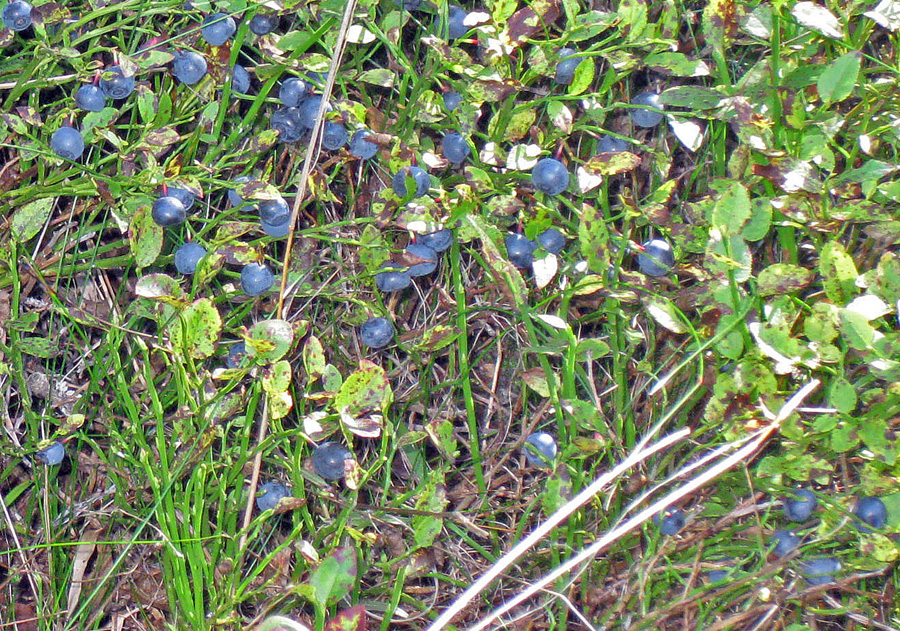
And of course, wild raspberries
Below is fungi collected in the same area some years ago
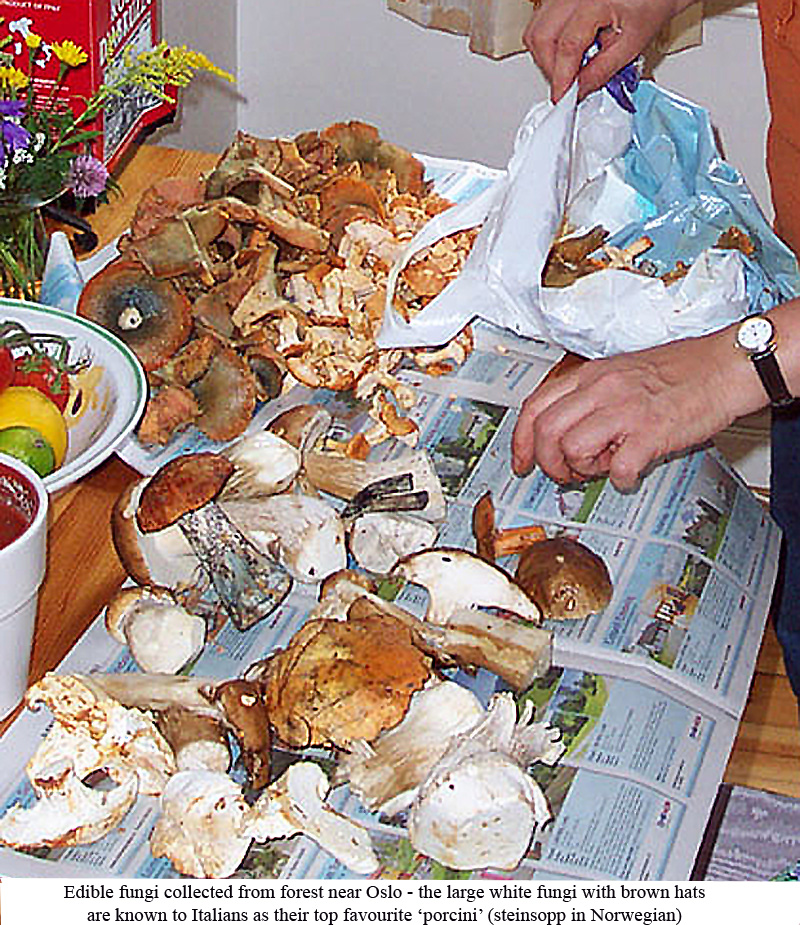
By contrast, the red fly agaric fungus - known in Norway as 'rød fluesopp' is not for your normal cuisine. It can be eaten, however, if one thinks one might like the psychotropic results, including hallucinatory experiences. Presumably, it does not affect its main consumers negativelty, i.e. the flies that enjoy it.
